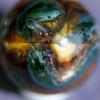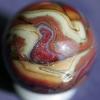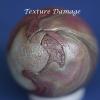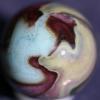-
Posts
2228 -
Joined
-
Last visited
Content Type
Profiles
Forums
Gallery
Events
Everything posted by richsantaclaus
-

Texas Marble Collector's Inc. Show
richsantaclaus replied to sissydear's topic in General Marble & Glass Chat
ok, I'll catch the next years show then. Thanks -

Texas Marble Collector's Inc. Show
richsantaclaus replied to sissydear's topic in General Marble & Glass Chat
I have met Mr. Neel before. I hope the date will NOT be the 8th - I have a very important family function to attend in Nevada. -

Texas Marble Collector's Inc. Show
richsantaclaus replied to sissydear's topic in General Marble & Glass Chat
Thanks for the visuals - looks as if everyone had a good time too! -

O.t. .. But Nice To Look At ...
richsantaclaus replied to mibcapper's topic in General Marble & Glass Chat
Thanks - I have never seem them before! -

O.t. .. But Nice To Look At ...
richsantaclaus replied to mibcapper's topic in General Marble & Glass Chat
Ah, I have no idea what those are????? Help! -
I pride myself on doing a marble "right." May sound sorts conceded but it's true. Each and every remelt or repair, I treat the little orb as if it were mine and I attempt to make glass art out of it. If the person wants the design to remain the same, and IF the glass will allow it, I don't do any art stuff, only attempt to make it like it was when it came off the rollers with the same design. It's ALL fun!
-
Matthew - I had fun fixing and arting this marble up. Now the members can see the difference between just repairing a marble (like I showed in another post) verses repairing one and then arting it up. Rich
-
Wow - totally cool stuff!!!!!
-
Well placed mushroom!!!!! (cloud that is!)
-
Thanks Jill. I just love to have a story surrounding marbles when I can get one. For me, it adds something to my reason for collecting marbles and I hopes everyone would like it too.
-
-
-
Bunker Window Marble The First Atomic Bomb Blast, 1945 The events that took place in a remote area of New Mexico during the predawn hours of July 16, 1945 forever changed the world. In the early morning darkness the incredible destructive powers of the atom were first unleashed and what had been merely theoretical became reality. First picture below shows .034 seconds after detonation The test was the culmination of three years' planning and development within the super secret Manhattan Project headed by General Leslie R. Groves. Dr. J. Robert Oppenheimer directed the scientific team headquartered at Los Alamos, New Mexico. An isolated corner of the Alamogordo Bombing and Gunnery Range located 230 miles south of Los Alamos was selected for the test that was given the code-name "Trinity." Even before the bomb was tested, a second bomb was secretly dispatched to the Pacific for an attack on the Japanese city of Hiroshima. Preparations for the test included the building of a steel tower that would suspend the bomb one hundred feet above ground. Many were apprehensive - there were concerns that the blast might launch a cataclysmic reaction in the upper atmosphere leading to world destruction. Some feared the consequences of radio-active fallout on civilian populations surrounding the test site. Still others feared the test would be an outright dud. Observers were sent to surrounding towns to monitor the results of the blast and medical teams were kept on alert. Finally, the rains that had delayed the test for almost two weeks subsided and in the darkness of that July morning history was made. "We were reaching into the unknown and we did not know what might come of it." Two days after the blast, General Groves, head of the Manhattan Project, sent a Top Secret memorandum to Secretary of War Stimson detailing the events of that morning. Groves included the description of General Thomas Farrell who was in an observation hut close to the blast along with a hand-full of scientists and other personnel. We join General Farrell's account a few hours before the explosion: "The scene inside the shelter was dramatic beyond words. In and around the shelter were some twenty-odd people concerned with last minute arrangements prior to firing the shot. Included were: Dr. Oppenheimer, the Director who had borne the great scientific burden of developing the weapon from the raw materials made in Tennessee and Washington and a dozen of his key assistants - Dr. Kistiakowsky, who developed the highly special explosives; Dr. Bainbridge, who supervised all the detailed arrangements for the test; Dr. Hubbard, the weather expert, and several others. Besides these, there were a handful of soldiers, two or three Army officers and one Naval officer. The shelter was cluttered with a great variety of instruments and radios. For some hectic two hours preceding the blast, General Groves stayed with the Director, walking with him and steadying his tense excitement. Every time the Director would be about to explode because of some untoward happening, General Groves would take him off and walk with him in the rain, counseling with him and reassuring him that everything would be all right. At twenty minutes before zero hour, General Groves left for his station at the base camp, first because it provided a better observation point and second, because of our rule that he and I must not be together in situations where there is an element of danger, which existed at both points. Just after General Groves left, announcements began to be broadcast of the interval remaining before the blast. They were sent by radio to the other groups participating in and observing the test. As the time interval grew smaller and changed from minutes to seconds, the tension increased by leaps and bounds. Everyone in that room knew the awful potentialities of the thing that they thought was about to happen. The scientists felt that their figuring must be right and that the bomb had to go off but there was in everyone's mind a strong measure of doubt. The feeling of many could be expressed by ''Lord, I believe; help Thou mine unbelief.' We were reaching into the unknown and we did not know what might come of it. It can be safely said that most of those present - Christian, Jew and Atheist - were praying and praying harder than they had ever prayed before. If the shot were successful, it was a justification of the several years of intensive effort of tens of thousands of people statesmen, scientists, engineers, manufacturers, soldiers, and many others in every walk of life. In that brief instant in the remote New Mexico desert the tremendous effort of the brains and brawn of all these people came suddenly and startlingly to the fullest fruition. Dr. Oppenheimer, on whom had rested a very heavy burden, grew tenser as the last seconds ticked off. He scarce breathed. He held on to a post to steady himself. For the last few seconds, he stared directly ahead and then when the announcer shouted 'Now!' and there came this tremendous burst of light followed shortly thereafter by the deep growling roar of the explosion, his face relaxed into an expression of tremendous relief. Several of the observers standing back of the shelter to watch the lighting effects were knocked flat by the blast. The tension in the room let up and all started congratulating each other. Everyone sensed 'This is it!' No matter what might happen now all knew that the impossible scientific job had been done. Atomic fission would no longer be hidden in the cloisters of the theoretical physicists' dreams. It was almost full grown at birth. It was a great new force to be used for good or for evil. There was a feeling in that shelter that those concerned with its nativity should dedicate their lives to the mission that it would always be used for good and never for evil. Dr. Kistiakowsky, the impulsive Russian, [actually an American and a Harvard professor] threw his arms around Dr. Oppenheimer and embraced him with shouts of glee. Others were equally enthusiastic. All the pent-up emotions were released in those few minutes and all seemed to sense immediately that the explosion had far exceeded the most optimistic expectations and wildest hopes of the scientists. All seemed to feel that they had been present at the birth of a new age - The Age of Atomic Energy - and felt their profound responsibility to help in guiding into right channels the tremendous forces which had been unleashed for the first time in history. As to the present war, there was a feeling that no matter what else might happen, we now had the means to insure its speedy conclusion and save thousands of American lives." References: General Farrell's account appears in - Department of State, Foreign Relations for the United States Conference of Berlin (Potsdam) (1945); Lansing, Lamont, Day of Trinity (1965). The bunker windows were made of special glass. In order to stop the radiation, the glass was made with a mixture consisting of 26% lead. The viewing window was 5” thick. Below is a picture of the bunker. Second picture shows the bunker. Mr. Wolfgang Mueller is a professional Geologist and mineral marble maker. At the Orange County Marble Show, I was fortunate enough to ask if he’d like to do a marble exchange with me. Lucky for me, he agreed to an art exchange. I was able to choose from over 50 different mineral marbles but one caught my eye in particular. After retiring from a 37-year career as a math/science teacher, one marble stood out to my attention. This marble was made from one of the windows in the bunker that was from the first atomic bomb blast in 1945. Third picture shows the marble made from the window glass. I have taken the photo using a black background. My reflection, the blue sky and my house can be seen in the photo. The marble itself is very heavy, optically clear and has a light yellowish tint. Here are pictures of the window the marble was made from. The last set of pictures show the cullet from the window. I want to thank Wolfgang once again for allowing me to own such a wonderful piece of history. Below are some interesting sites you might want to check out. http://www.atomicarchive.com/Photos/Trinity/index.shtml http://www.sandia.gov/LabNews/LN11-0...ity_story.html http://www.atomictourist.com/trinity.htm http://www.history.com/this-day-in-h...he-atomic-bomb http://en.wikipedia.org/wiki/Trinity_%28nuclear_test%29 I hope you guys like this article and the marble. Rich
-

Marbles Came In The Mail Today
richsantaclaus replied to sissydear's topic in General Marble & Glass Chat
Edna - those look like candles! -

Marbles Came In The Mail Today
richsantaclaus replied to sissydear's topic in General Marble & Glass Chat
Kugler glass is a soft glass (COE 104) compatible. It is in the same category at Moretti, Vertofond amd Lausha soft glass. It has many beautiful colors, like all soft glass have. -
It's all good - it's the love of glass that counts and we all have our own likes/dislikes.
-
Thanks Mike for clearing that up for me. As someone who works with glass, I am sure you understand when working with others glass where you don't know the COE or the grade of the glass used in making the marble, even keeping the marble to be reworked WAY out in the coolest part of the flame - it still will burn. Attempting to use a reducing flame - still the glass burns. Controlling the volume of gas - still the glass burns. If you have another way to keep the glass from burning when a repair is attempted, I'd sure like you to tell me what it is please. It would unlock many techniques for me if I could conquer that problem - especially with oxblood. Thanks Rich
-
lol @ Mike - I don't believe that one bit about you...lol How do you feel about these two remelts? Do they meet your artistic standards? These two were made from 4 damaged marbles and I took art liberty with to redesign the patterns. I didn't do any of the art redesigning with the 13 marbles in my post as that wasn't the driving factor of it. (I just went back and added more to the post in the restoration room about this topic) I wanted to simply show the "before" damage verses a simple "fix" and how it is possible to repair a damaged marble. If I chose to do so, I could have made them MUCH better by adding aventurine, making different patterns, or adding different colored glass to the marble to spruce it up a bit. Maybe I should have stated that in the first post but alas, I didn't. Live and learn I guess.
-
I appreciate your views and I agree. Not all repairs will be 100% because I understand the nature of glass. The point is that a damaged marble CAN be repaired. In these examples, I did not take the path of the artist where I'd alter the pattern drastically to recreate a piece of glass art. All I wanted to show you guys is what would happen IF you wanted a straight repair of the damage. The burnt effects are caused by the oxblood glass not being the best of quality to begin with - as I thought everyone understood but I see I need to explain that. If I chose to, I could have flame polished the glass to bring back the luster but that wasn't the point of the post. Mike - have you seen my work with sulphides? Unlike this Fenton glass that does blend in a weird way when reheated in spite of the temperature of the torch's heat, the sulphide glass reacts quite nicely. For example:
-
Hummmm, which ones in particular?
-
I am not sure how many members take a look at the restoration section but I've just made a post there about 13 types (my names for them) of problematic marbles. I've included a link for you to click on IF you'd like to take time and see. http://marbleconnection.invisionzone.com/index.php?showtopic=15500&st=0&gopid=133237entry133237 Thanks Rich
-

Types Of Damage I Repair By Torching
richsantaclaus replied to richsantaclaus's topic in Restoration Q & A
I hope you've enjoyed looking at my little types of damage pictures with the accompanying fixes. Remember, these fixes are only the first step in the repair of the marble. After one fills in the cracks, chips, etc., then the art work begins! Thanks for looking. Rich -

Types Of Damage I Repair By Torching
richsantaclaus replied to richsantaclaus's topic in Restoration Q & A
-

Types Of Damage I Repair By Torching
richsantaclaus replied to richsantaclaus's topic in Restoration Q & A
-

Types Of Damage I Repair By Torching
richsantaclaus replied to richsantaclaus's topic in Restoration Q & A
TEXTURE DAMAGE – Similar to surface damage but more sever, a course texture is formed on the surface of the marble.
















